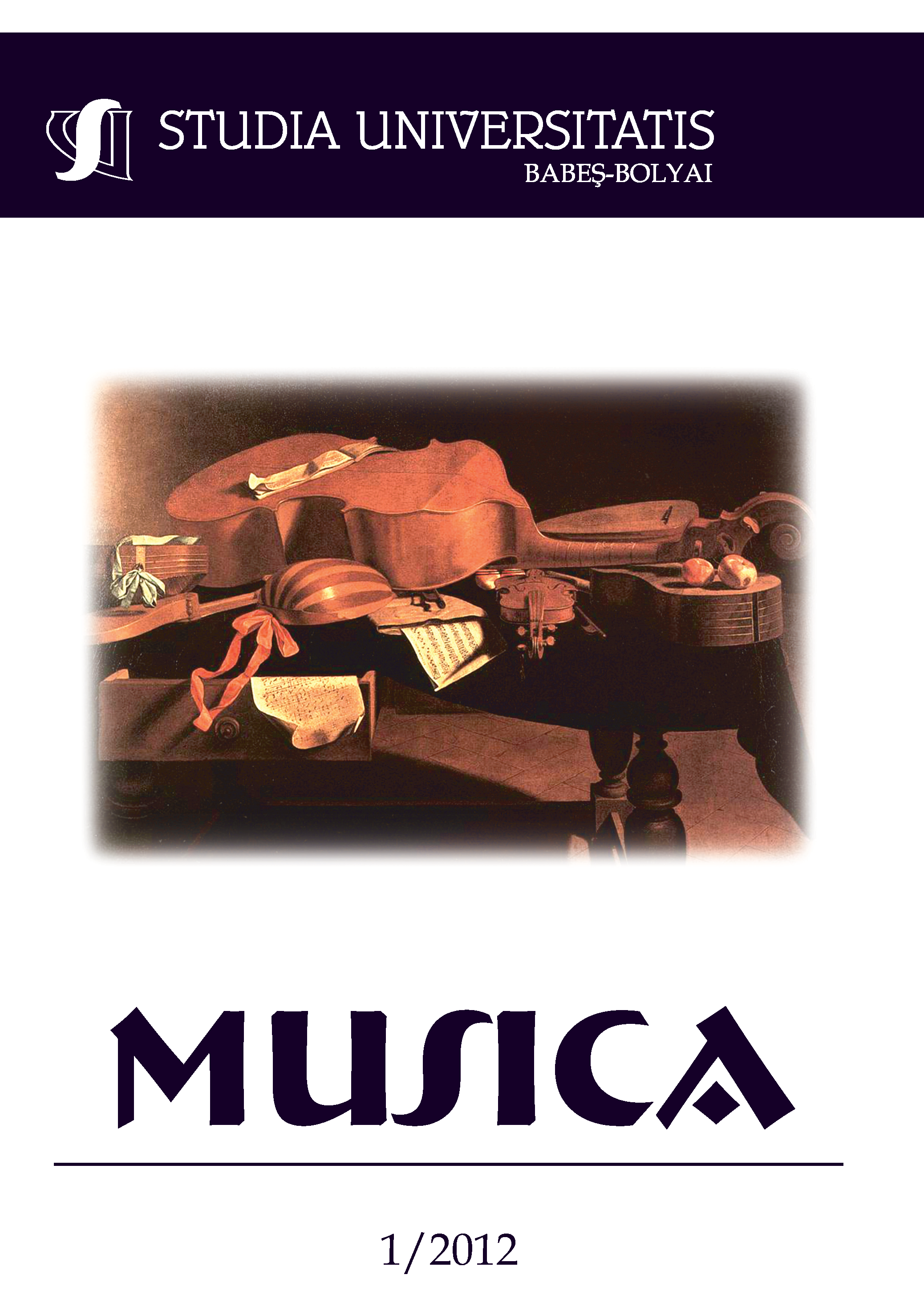THE HEALING POWER OF MUSIC. MUSIC IN PRACTICE
Keywords:
aesthetics, music therapy, emotionAbstract
Feelings, emotions – musical ones too – are constituted by the simplest elements, which form the basis of psychological phenomena. Their knowledge is indispensable in order to be able to approach the psychology of hearing, of sound and music psychology. The brain research conducted in the second half of the 20th century has demonstrated the fact that the right hemisphere is the one responsible for music: it has the functions of recognizing melody, while the left one to identify rhythm. Music has a particular effect on the aesthetic functions of emotions, polishing, educating and - if need be – healing them. The most important role of music, however, is preventing the possible ailments of our emotional world.
References
Angi, István, Az éthoszrendek szimbolikája a gregorián ének történetében (The Symbolism of Ethos Stuctures in the History of Gregorian Chant), in: Psallite Sapienter. Festschrift zum 80. Geburtstag von Georg Béres, Szent István Társulat, Budapest, 2008.
Angi, István, Zeneesztétikai előadások (Lectures of Musical Aesthetics), Vol. I-II, Scientia, Cluj-Napoca, 2003.
Athanasiu, Andrei, Medicină și muzică (Medicine and Music), Editura Medicală, Bucureşti, 1986.
Bánki, Csaba M., Életünk és az agy (Our Lives and the Brain), Biográf kiadó, Budapest, 1995.
Bárdos, Lajos, Modális harmóniák (Modal Harmonies), Zeneműkiadó, Budapest, 1961.
Brockhaus-Riemann, Zenei lexikon (Music Encyclopedia), Zeneműkiadó, Budapest, 1985.
Hartmann, Nicolai, Esztétika (Aesthetics), Translated by: Gábor Bonyhai, Magyar Helikon, 1977.
Ionescu, Constantin A., Istoria psihologiei muzicale (The History of Music Psychology), Editura muzicală, Bucureşti, 1982.
Jeppesen, Knud, Ellenpont (Counterpoint), Zeneműkiadó, Budapest, 1975.
Lindenbergerné, Kardos Erzsébet, Zeneterápia szöveggyűjtemény (Music Therapy Reader), Published by Kulcs a muzsikához, Pécs, 2005.
Preda, Vasile, Terapii prin mediere artistică (Therapies Using Artistic Mediation), Presa Universitară Clujeană, Cluj-Napoca, 2003.
Sztanyiszlavszkij, K.Sz., A színész munkája I. (An Actor’s Work), Hungária Kiadó, Budapest, 1950.
Vitányi, Iván, A zene lélektana (The Psychology of Music), Gondolat Kiadó, Budapest, 1969.
Online sources:
http://williamdonius.com/page/2/
http://www.friweb.hu/teha/music2.htm
http://members.iif.hu/visontay/ponticulus/rovatok/hidverok/malina.html
http://www.freeweb.hu/teha/music2.htm
http://nbif.blogspot.com/2010/05/right-versus-left-hemispheric-injury.html
Downloads
Published
How to Cite
Issue
Section
License
Copyright (c) 2012 Studia Universitatis Babeș-Bolyai Musica

This work is licensed under a Creative Commons Attribution-NonCommercial-NoDerivatives 4.0 International License.



